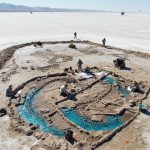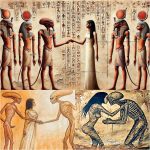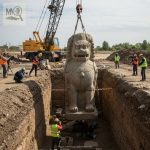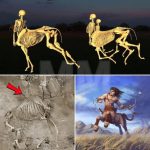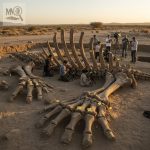Shocking Discovery: The Four-Legged Woman Unearthed

Archaeology often reveals treasures that deepen our understanding of human history—artifacts, monuments, and skeletal remains that connect us to the past. But every so often, a discovery emerges that unsettles our imagination and raises more questions than it answers. Such is the case with the recent unearthing of a woman’s skeleton preserved with four legs and two pelvises. This haunting find has left both scholars and the public captivated, blurring the line between myth, science, and cultural belief.
![]()
A Grave That Defies Explanation
The skeletal remains, found in an ancient burial site, are unlike anything archaeologists have documented before. The woman’s body displayed not only a rare biological anomaly but also signs of deliberate preservation, suggesting her burial carried profound meaning. For centuries, tales of human oddities—figures with multiple limbs or extraordinary features—have circulated in folklore. Yet this discovery offers physical evidence that such legends may have roots in reality.
Experts are divided over the interpretation. Was the four-legged woman viewed as a divine being, a symbol of fertility and power? Or was she feared as cursed, perhaps even sacrificed to appease supernatural forces? The ambiguity of her burial context only deepens the mystery.

Science Meets Myth
One theory suggests that the woman suffered from a rare congenital condition, such as dipygus, a developmental anomaly that results in partial duplication of the body’s lower half. If so, her remains would represent one of the earliest known cases in history. Medical specialists are intrigued, as such a condition is extraordinarily rare even in modern times.
Yet cultural and ritual explanations cannot be dismissed. Ancient societies often regarded physical differences as omens—either sacred blessings or dangerous curses. The way she was laid to rest could reflect reverence, fear, or a combination of both. Her skeleton becomes not just a medical oddity but a cultural artifact, offering a glimpse into how past civilizations interpreted human difference.
Cultural Significance of the Find

What makes this discovery so compelling is its intersection of science and symbolism. Archaeologists must balance anatomical analysis with cultural interpretation, piecing together a narrative from fragmentary evidence. The four-legged woman challenges assumptions about how ancient societies viewed physical anomalies. Was she hidden away, celebrated, or ritualized? Each possibility speaks to broader questions about identity, spirituality, and human diversity in antiquity.
Furthermore, the discovery highlights how archaeology can validate myths. Stories once dismissed as superstition may, in fact, preserve memories of real individuals who lived extraordinary lives. This blurring of myth and reality forces us to reconsider how legends originate and why they endure.
Conclusion
The unearthing of the four-legged woman is more than a shocking archaeological discovery—it is a haunting reminder of humanity’s complex relationship with difference, myth, and mortality. Whether she was revered, shunned, or sacrificed, her existence reveals how ancient cultures grappled with the extraordinary. As experts continue to study her remains, one thing is certain: this enigmatic figure will remain a powerful symbol of the mysteries still hidden in our past.

